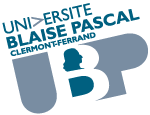Transverse Isotropic Behavior Identification using Digital Image Correlation of a Pre-structured Material Manufactured by 3D Printing
Résumé
This work aims to develop an advanced structured material [1] that enhances the physical properties in the fracture mechanics area with specimens printed by FDM. 3D printed parts are considered as complex structures and assumed to show a strong anisotropy related to deposition trajectories, air gaps, and welding lines. Therefore, a challenging problem that arises in this domain is the difficulty of predicting the mechanical behavior and controlling the physic properties of parts (tensile strength and fracture toughness…).
An extrusion deposition method was proposed involving the use of a controlled deposition method to improve the fracture toughness of FDM parts [2], [3].The enhancement is based on a filament deposition optimization in order to reproduce principal stresses directions in a region of interest submitted to crack initiation around the notch tip.
The overall goal of this research is to identify material constants from experimental tests. Those constants will be used then as inputs of a finite element model, which tackles to include the structural anisotropy by assigning materials references into local mesh elements [4]. Thus, the corresponding behavior was assumed to be transverse isotropic and five elastic materials constants must be identified. Hence, a set of tensile tests was performed with full-field measurements by Digital Image Correlation (DIC) for different filament orientations. Regions of interests were chosen according to the local loading state to activate specific materials constants. The experiments outcomes prove that 3D printed specimens have unexpectedly isotropic stiffness due to similar values found of longitudinal and transversal Young’s modulus 1680 MPa and 1414 MPa respectively. Although anisotropy is well highlighted when we consider tensile strength. On the light of these results, the model will be enriched by implementing a Hill yield criterion to better represent the observed plastic anisotropic behavior.
The main contribution is to validate the numerical model inputs that reproduce the measured experimental fields, and later on develop an identification based on an Updated Finite Element Model Updated (UFEM).
Origine : Fichiers produits par l'(les) auteur(s)




